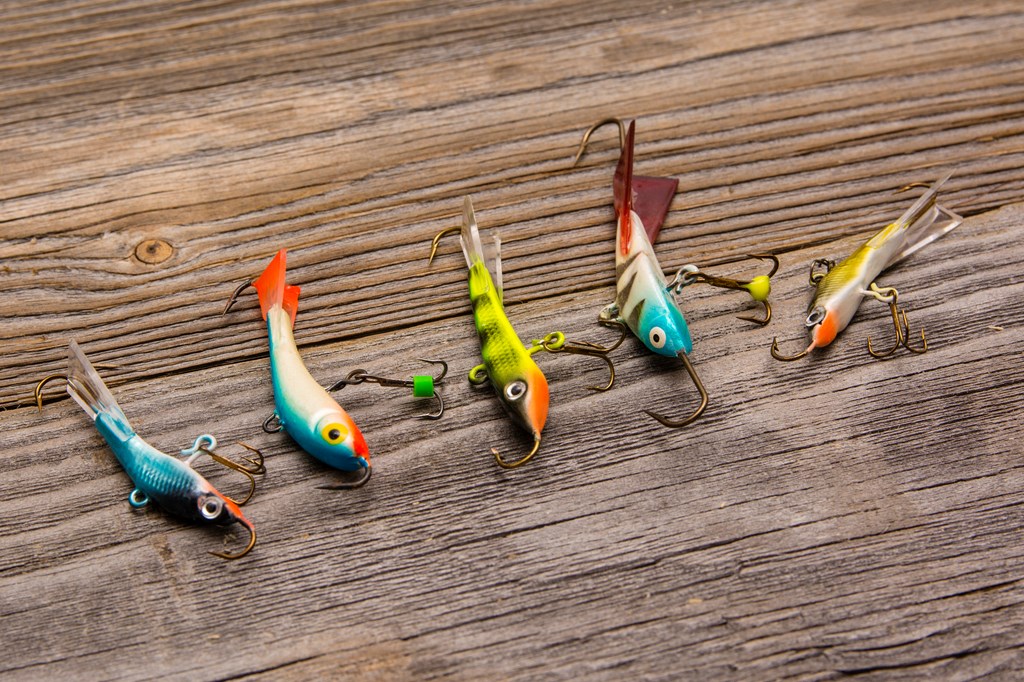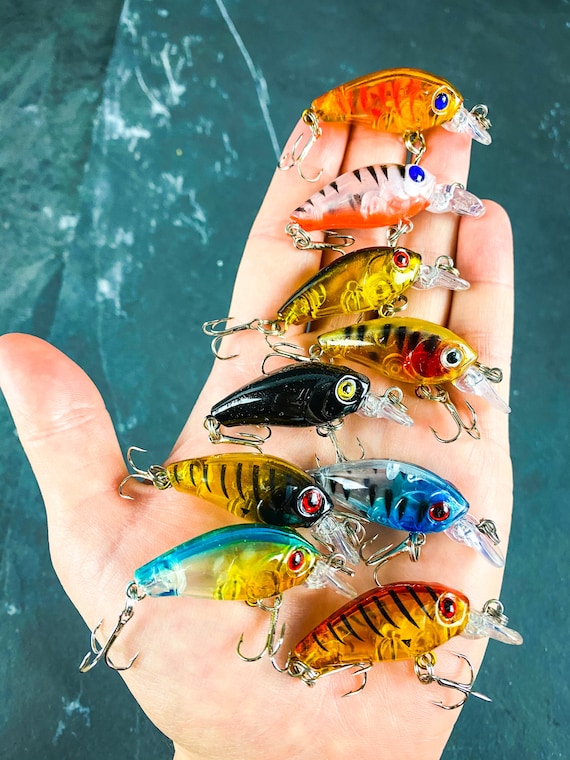Bass Fishing Lures for Clear vs. Murky Water — What Works Best?
Discover the Tricks Behind Efficient Bass Lures to Boost Your Fishing Experience
Comprehending the complexities of bass Lures can greatly influence angling success. Different Lures serve distinctive functions, from crankbaits developed for vast coverage to jigs that target specific structures. The efficiency of these Lures typically rests on aspects such as color, activity, and seasonal patterns. By mastering these elements, fishermens can unlock a much more fulfilling experience. Yet, the concern stays: which techniques will generate the finest results on the water?
Comprehending Bass Actions and Habitat
Understanding the behavior and habitat of bass is important for anglers looking for success on the water. Bass are versatile fish found in various freshwater atmospheres, including rivers, ponds, and lakes. They have a tendency to favor areas with framework, such as submerged rocks, dropped trees, and water vegetation, which supply shelter and searching grounds.
Seasonal patterns significantly affect their behavior; in warmer months, bass frequently populate superficial waters, while they pull away to much deeper locations throughout colder periods. Bass Lures. Their feeding behaviors are opportunistic, with a diet plan consisting mostly of smaller sized fish, pests, and crustaceans
Time of day likewise contributes; bass are a lot more energetic throughout mornings and late nights. Weather can affect their behavior also, as overcast days might urge superficial feeding, whereas bright sunlight typically drives them to seek cover. Recognizing these patterns equips anglers with the understanding needed for effective fishing strategies.
Kinds Of Bass Lures and Their Uses
A range of bass Lures are crucial tools for anglers intending to attract this preferred game fish. These Lures can be classified into a number of types, each offering unique purposes. Crankbaits, designed to resemble the swimming action of baitfish, work for covering big locations promptly. Spinnerbaits, including turning blades, produce vibrations and flashes that can lure bass hiding in cover. Jigs, with their heavy heads and weedless design, are suitable for lower fishing, enabling anglers to existing bait near frameworks where bass typically prowl. Soft plastics, such as worms and creature baits, offer flexibility and can be set up in numerous methods to adjust to differing conditions. Topwater lures, like frogs and poppers, are best employed throughout low-light hours when bass are proactively preying on the surface area. Each sort of attraction plays an essential function in enhancing angling experiences and boosting the likelihood of effective catches.

Color and Style: What Attracts Bass?
What elements affect bass attraction to specific appeal design and colors? The interplay of light, water clarity, and the natural surroundings plays a critical duty. Bright colors, such as chartreuse and orange, can catch a bass's eye in dirty waters, while much more subdued tones like eco-friendlies and blues may master clear conditions.
Design aspects, including form and movement, additionally dramatically effect bass destination. Lures that simulate natural victim, such as baitfish or crawfish, are especially effective. Additionally, the presence of sensible information, like ranges or fins, improves the natural look, more attracting bass.
Psychological elements, such as a bass's feeding habits and territorial impulses, must not be neglected. In particular situations, bold designs can provoke a response from aggressive bass, while refined variants can interest more mindful fish. Ultimately, recognizing design and color nuances is important for optimizing attraction performance.
Matching Lures to Water Issues
Selecting the ideal attraction includes greater than simply color and style; water conditions play a substantial function in identifying one of the most efficient choices. Variables such as water clarity, depth, and temperature straight affect bass behavior and their feeding patterns. In clear water, subtle discussions and natural colors tend to be a lot more effective, while murky conditions might call for brighter, extra vivid Lures that can attract focus.
Temperature level also impacts bass task; during warmer months, faster-moving Lures can evoke strikes, whereas cooler temperature levels might call for slower, extra deliberate presentations. Furthermore, much deeper waters often require larger Lures that can reach the preferred depth, while superficial locations are better suited for lighter, surface-oriented choices.
Techniques for Effective Lure Discussion
Mastering the strategies for effective lure discussion can significantly enhance fishing success. Anglers must concentrate on the rate and rhythm of their retrieves, adjusting them to mimic the natural activity of victim. A stable retrieve jobs well for several attractions, however integrating pauses can trigger strikes from extra careful fish. Furthermore, differing the deepness of the lure is essential; using various casting angles and adjusting the reel can help target fish at different midsts.
Making use of a mix of finesse presentations, such as twitching or dragging the lure across all-time low, can also be efficient. It is essential for review anglers to review the water and change their methods based on visibility and structure. In addition, providing Lures near cover, like submerged rocks or vegetation, typically yields much better outcomes, as bass tend to look for sanctuary. Inevitably, try out various methods will certainly cause a much more satisfying fishing experience.
Seasonal Factors To Consider for Draw Option
Seasonal changes dramatically affect bass behavior and attraction performance. As water temperatures change, fishermens must change their lure choices to straighten with pre-spawning and post-spawn conditions. Understanding these seasonal patterns can improve angling success by targeting bass at their most active times.
Seasonal Water Temperature Level Effects
As water temperatures vary throughout the year, bass behavior and feeding patterns alter, affecting the effectiveness of various appeals. During colder months, bass tend to become tired, favoring slow-moving Lures that mimic having a hard time prey. On the other hand, as temperature levels climb in spring, bass end up being more energetic, making faster, much more aggressive Lures reliable. Mid-summer sees bass looking for deeper, cooler waters, requiring making use of Lures that can reach these depths. As temperature levels begin to go down in loss, bass often feed greatly to prepare for wintertime, making flexible Lures that can copy a range of forage types especially successful. Understanding these seasonal temperature impacts permits fishermens to pick suitable Lures that align with bass behavior, optimizing their angling success.
Pre-Spawning Tempt Choices
What elements affect the choice of Lures during the pre-spawning period for bass? Fishermens should take into consideration water temperature, weather, and the bass's feeding habits. As temperatures climb and days extend, bass end up being much more hostile and energetic, motivating a change in their feeding patterns. Throughout this time around, entices that mimic the all-natural prey of bass-- such as shad or bluegill-- are particularly reliable. Popular selections include spinnerbaits, lipless crankbaits, and jigs, which can be fished at various midsts. In addition, anglers should concentrate on areas with cover, such as immersed plants or rocky frameworks, as these spots typically draw in pre-spawn bass. Best Bass Lures South Africa. Recognizing these aspects can dramatically improve the possibilities of a successful angling journey during this important seasonal stage
Post-Spawn Techniques Adjustments
Although post-spawn bass display various actions than throughout the pre-spawn stage, efficient appeal selection remains critical for fishermens aiming to target them successfully. After generating, bass frequently come to be tired and seek much deeper waters, making it important to adjust attraction view website selections accordingly. Fishermens ought to take into consideration utilizing slower-moving baits, such as jigs or soft plastics, which can entice bass that are less hostile. Crankbaits with a refined action can likewise work, enabling a slower discussion that resembles the all-natural post-spawn forage. In addition, fishing near structure, such as immersed vegetation or rocks, can boost opportunities of success. By recognizing these seasonal adjustments, anglers can enhance their fishing experience and boost their catch prices during the post-spawn duration.
Regularly Asked Concerns
Exactly how Do I Pick the Right Rod for Bass Fishing?
To pick the ideal rod for bass angling, one should take into consideration the rod's action, power, and length. A medium to medium-heavy pole, around 6 to 7 feet, is often optimal for adaptability and control.

What Is the very best Time of Day to Capture Bass?
The very best time of day to catch bass is generally morning and late mid-day. During these durations, bass are more energetic, feeding near the surface, making them easier targets for anglers making use of reliable attractions.
Exactly How Do Weather Affect Bass Fishing Success?
Weather condition conditions substantially affect bass angling success. Warmer temperatures and overcast skies frequently encourage bass activity, while cold spells can trigger lethargy. Rain can also boost feeding actions, making it important for anglers to adjust their approaches Home Page appropriately.
Can I Utilize Lures for Various Other Fish Variety?
Yes, lures developed for bass can additionally work for other fish types. However, selecting the suitable dimension, shade, and action according to the target varieties and their feeding practices stays essential for success.
What Prevail Blunders When Utilizing Bass Lures?
Common blunders when utilizing bass Lures consist of choosing unsuitable dimensions or colors, recovering as well rapidly, stopping working to adjust to weather problems, and ruling out water depth. These mistakes can dramatically lower the chances of an effective catch.
As water temperature levels fluctuate throughout the year, bass behavior and feeding patterns alter, affecting the efficiency of various appeals. Mid-summer sees bass looking for deeper, cooler waters, requiring the use of Lures that can get to these depths. Post-spawn bass display various actions than throughout the pre-spawn phase, efficient appeal choice remains critical for anglers intending to target them efficiently. After spawning, bass usually become lethargic and seek deeper waters, making it crucial to change lure selections accordingly. Common blunders when using bass Lures consist of selecting improper dimensions or colors, fetching as well swiftly, failing to adjust to weather conditions, and not taking into consideration water deepness.